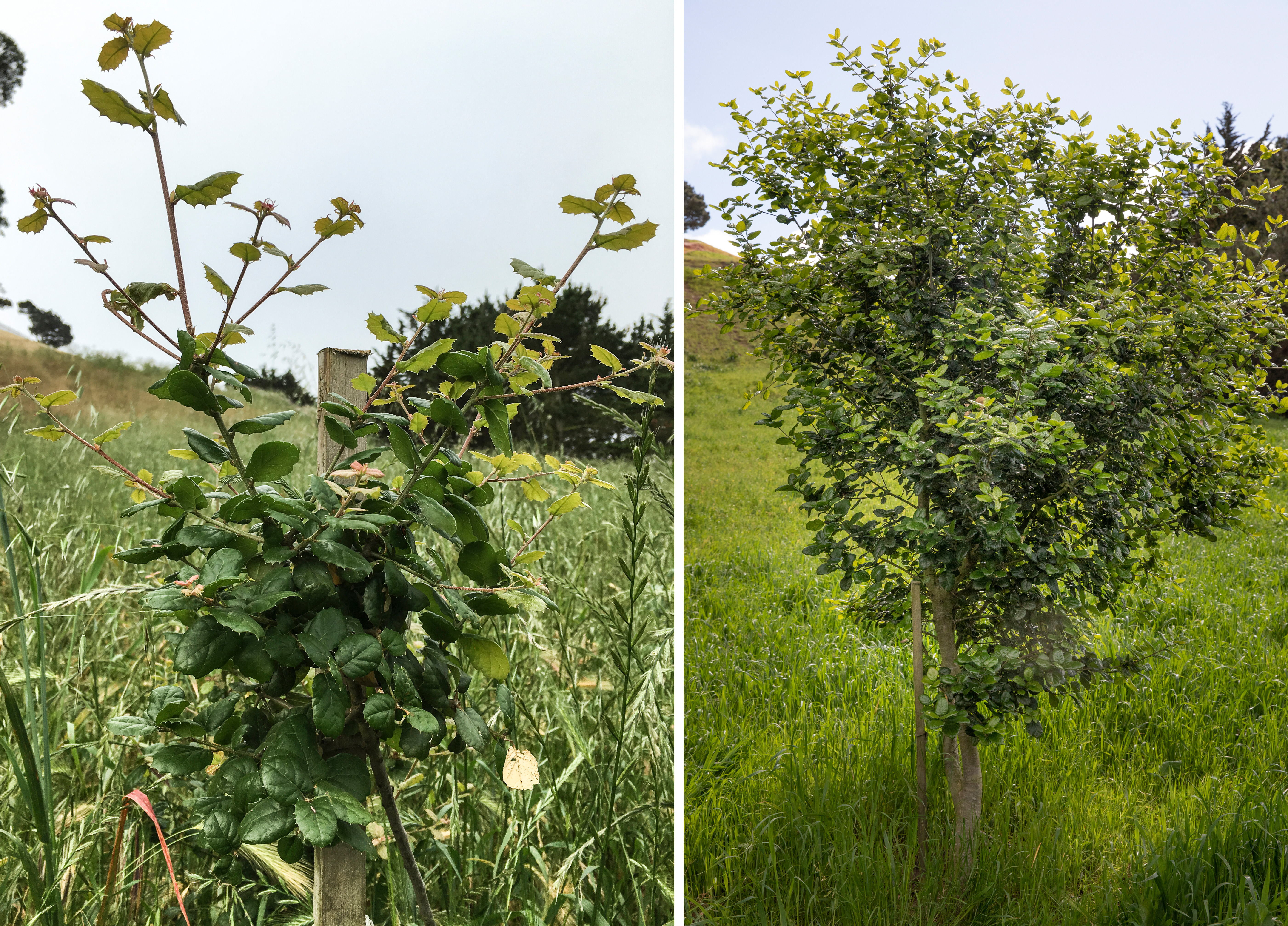 It doesn’t take an oak seedling forever to turn into a tree. The 2 photos above are the same tree, the photo on the left was taken in March of 2016. The one on the right was taken March 24th 2020. The stake is 34 inches tall so the little tree grew from about 3 feet to over 7 feet in just 4 years.
It doesn’t take an oak seedling forever to turn into a tree. The 2 photos above are the same tree, the photo on the left was taken in March of 2016. The one on the right was taken March 24th 2020. The stake is 34 inches tall so the little tree grew from about 3 feet to over 7 feet in just 4 years.
I planted this little guy at the bottom of a weedy slope near my house and watered it monthly during the dry summers and fall for only the first 2 years. It’s grown anywhere from 4 to 12 inches every spring since. An oak tree’s size will depend on where you plant it. The bottom of a hill where the rain drains should turn this tree into a giant.  This oak has got a very strong, deep root system, it’s easy to see by looking how at it’s trunk.
This oak has got a very strong, deep root system, it’s easy to see by looking how at it’s trunk.
 Coast Live Oaks generally grow the most in March after the winter rains. This photo shows 6-8 inches of growth this year, and it we’ve had a pretty dry winter. I’ve noticed sometimes this tree has more than one growth spurt a year.
Coast Live Oaks generally grow the most in March after the winter rains. This photo shows 6-8 inches of growth this year, and it we’ve had a pretty dry winter. I’ve noticed sometimes this tree has more than one growth spurt a year.

Oaks are keystone trees, they’re so important for habitat restoration. A bushtit is already using its dense foliage to hide its nest. Coast Live Oaks support a diversity of insects, birds and mammals. They sequester much more carbon than non-natives. They stabilize soil on slopes, and can withstand fires and droughts.
And watching them grow is pretty amazing. Just don’t get in the way!





